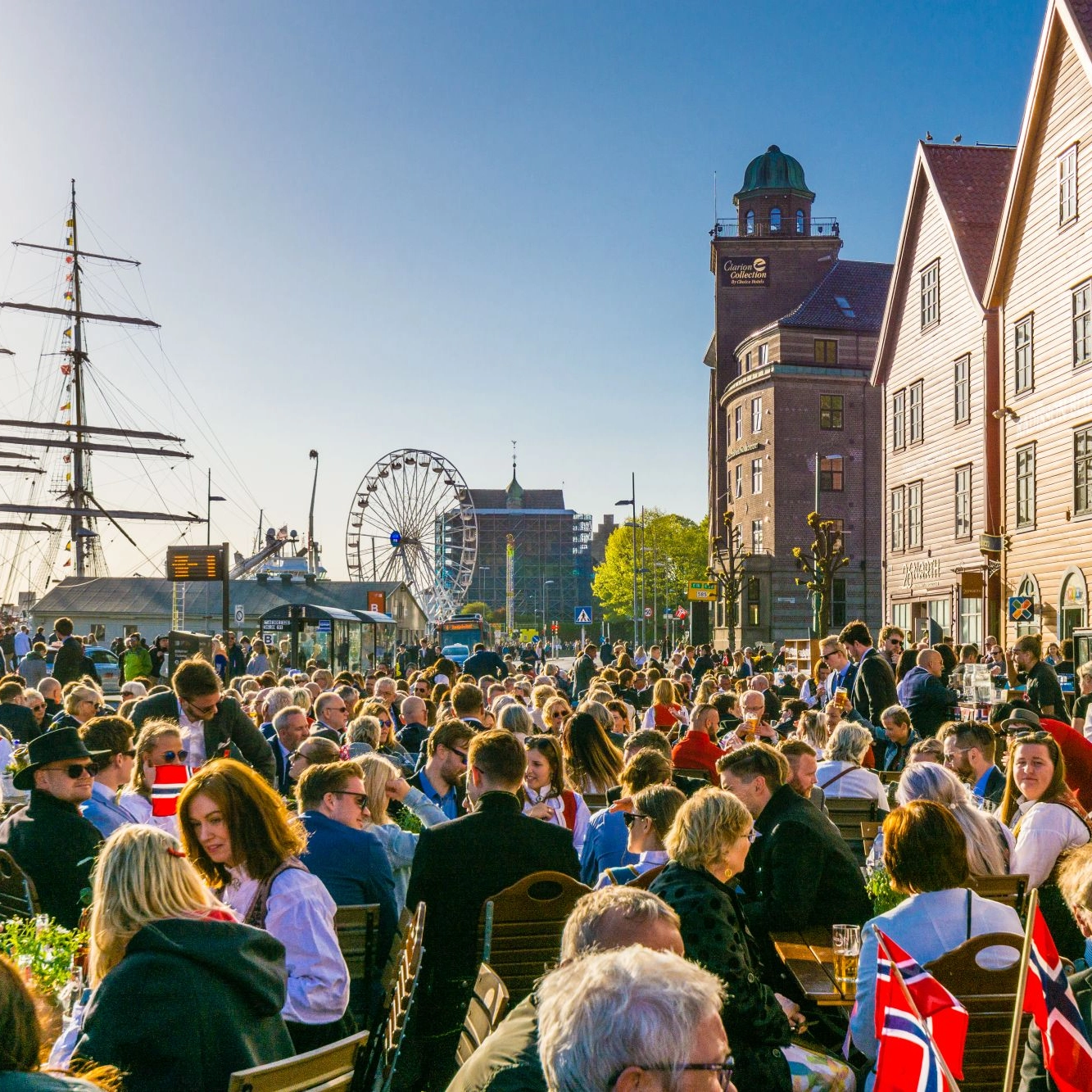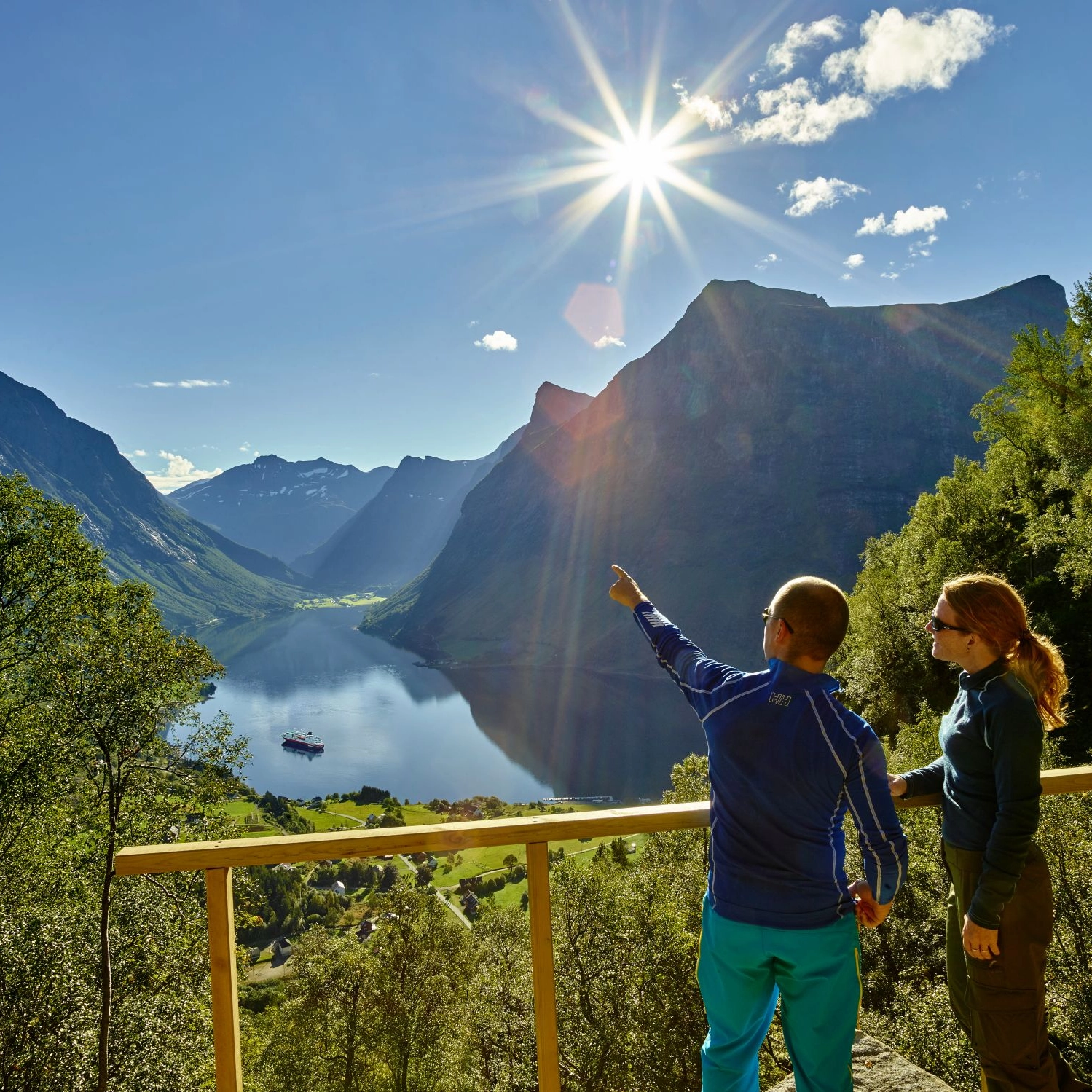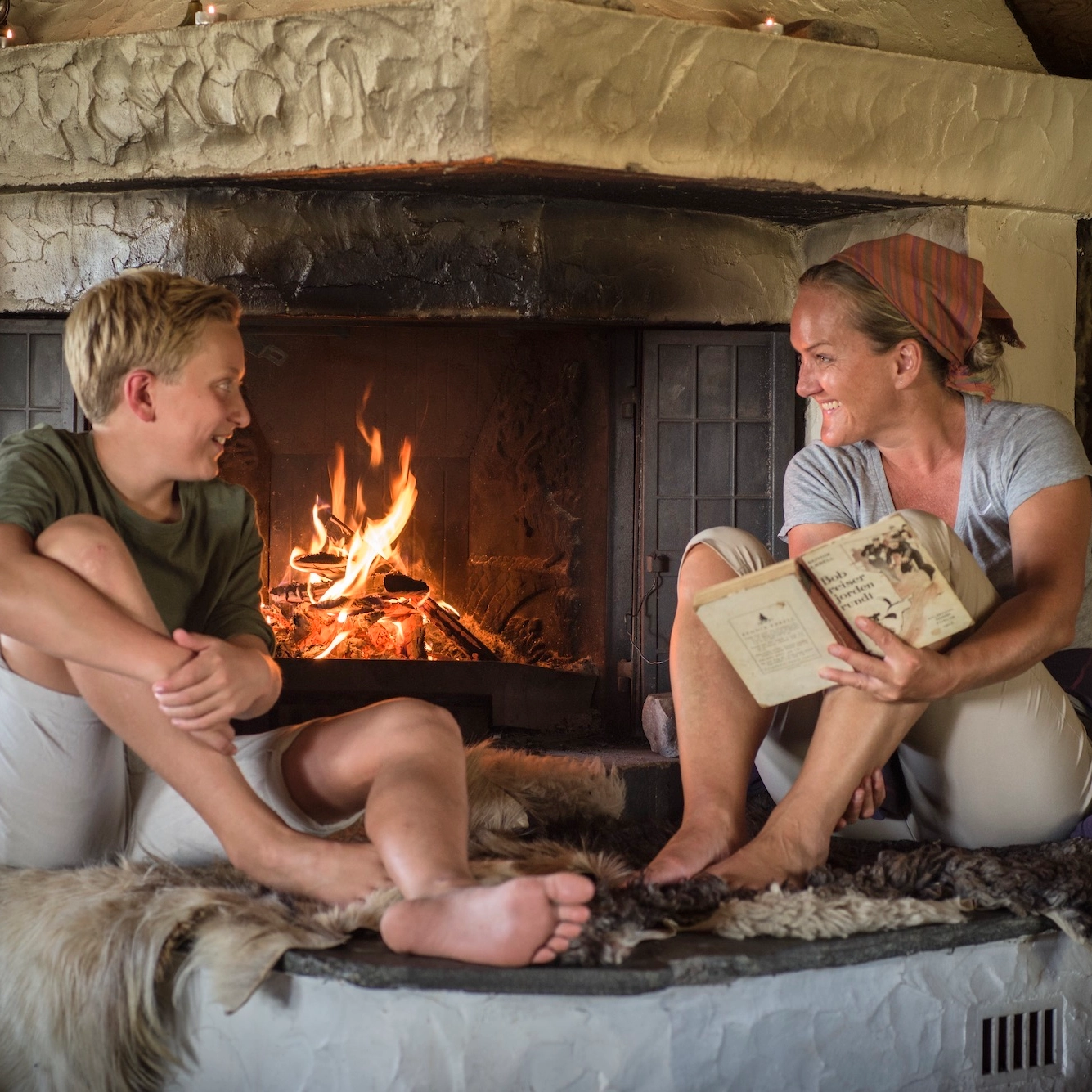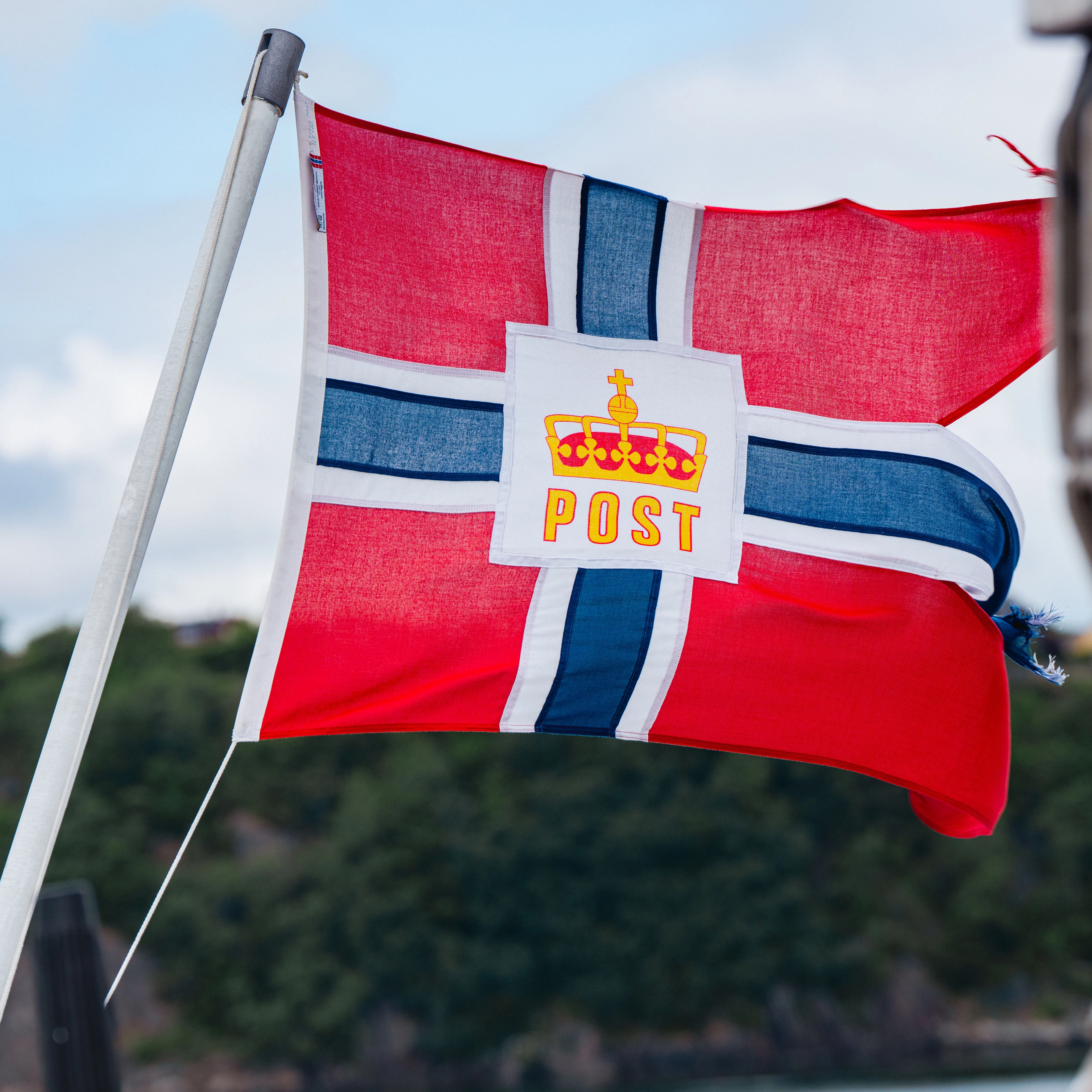How the medieval warm period changed Norway forever
Did you know the oldest human skeleton found in Norway was carbon-dated to 6,600 BC? The history of Norway has been influenced to an extraordinary degree by the terrain and the climate of the region.

Following the retreat of the great inland ice sheets, early inhabitants migrated north into a territory that we today know as Norway. Early settlers traveled steadily northwards along with the coastal areas, warmed by the Gulf Stream, where life was more bearable. In order to survive, they fished and hunted. Between 5,000 BC and 4,000 BC, the earliest agricultural settlements appeared around the Oslofjord with tools and techniques from farther south as people in the north began to travel on basic wooden skis and use slate tools.
As farming gradually spread, fertile areas around the Oslofjord, Trondheimsfjord, Lake Mjøsa (near Lillehammer), and Jæren (near Stavanger) began to create wealth for these emerging farming communities.

The Medieval Warm Period (MWP) was a time of warm climate from about 900–1300 AD when global temperatures were somewhat warmer than at present. The effects of the warm period were particularly evident in Europe, where grain crops flourished, alpine tree lines rose, many new cities arose, and the population more than doubled.
The Vikings took advantage of the climatic shift to colonize southern Greenland in 985 AD when the milder climates allowed favorable open-ocean sailing conditions for navigation and fishing.
The population of Norway increased from 150,000 in 1000 to 400,000 in 1300 with more and more land being cleared for agriculture. While in the Viking Age all farmers owned their own land, by 1300 seventy percent of the land was owned by the king, the church, or the aristocracy. This was a gradual process that took place because farmers would borrow money in poor times and be unable to repay their debts. In the 13th century, about twenty percent of a farmer's yield went to the king, church, and landowners.

This time around, as we see the climate shifting once more. Researchers expect the changes to be larger and affect us more strongly in the future. Climate change will have major consequences for global resources and agriculture.
The Norwegian Climate Service Center forecasts a temperature increase, fewer days of snow, more rain, and a 60 percent increase in flood size at the end of this century if greenhouse gas emissions are not reduced.

Throughout history, fishing has been a major industry in Norway. Norway’s geographical characteristics, long coastline together with climatic factors have made the country extremely well suited for this industry. Thus, Norway is a major European fishery nation and has been for centuries.
Since medieval times, Norwegian cod has been a staple part of the weekly diet in many Catholic European countries. Cod, fished in the northern areas, dried and/or salted in south Norway, was exported in large quantities to central and even more to southern Europe. In later years, some African countries have found dried cod from Norway to be cheap and healthy food.
Norwegian fishery was initially a very coastal affair with small vessels and activity based on the seasonal migration of fish. As the demand grew sharply in the 1900s, in 1970, Norway introduced aquaculture of salmon which has grown to be an important supplement to traditional fisheries, and also a major export commodity.
In Hardanger you can join a Fjord and salmon safari where you will get a unique insight into Norwegian aquaculture and salmon production by the Hardangerfjord.
In Hardanger you can join a Fjord and salmon safari where you will get a unique insight into Norwegian aquaculture and salmon production by the Hardangerfjord.
Norway was once at risk of losing much of its forests. After centuries of logging for timber and firewood, the country had consumed much of this previously vast natural resource.
All that has changed. Today, Norway has triple the amount of standing wood in forests than it had 100 years ago. The annual harvest of wood only takes about half the amount that grows each year, so overall the forests are growing. This forest growth is enough to offset roughly 60% of the country's annual greenhouse gas emissions.
Get to know the Norwegians
The typical Norwegian cherishes nature and embraces the great outdoors. Minimalist in design and lifestyle, they prioritize practicality. Norwegians honor heritage and folklore, fostering a vibrant, inclusive society that blends tradition with a modern, open-minded outlook while embracing sustainability.

Traditional Norwegian food
Norway has a lot of interesting traditional food, and any travelers visiting Norway would do well to sample some of the local cuisines. Culinary traditions in Norway have been dominated by meat, fish, and seafood that could be hunted or caught. These days the Norwegian food space represents an interesting mix of old and new due to culinary influences from all over the world.

Why Norway Is Perfect for Adventure Travelers
Norway is often referred to as a dream destination for adventure travelers. The varied Norwegian landscapes provide adventurers with a rich diversity of outdoor activities to choose from throughout the year, including hiking, biking, skiing, kayaking, and rock climbing, to name a few. There's no shortage of thrilling experiences to be had in Norway's great outdoors!

The 17th of May – Norway’s National Day
The 17th of May is Norway’s national day, and what a party it is! Though many countries mark their national day with military parades, Norway’s celebration is lighthearted and fun, with a special focus on kids enjoying this special day. In this article, we’ll tell you all about Norway’s Constitution Day, how it began, and how it’s celebrated across Norway today.

Why a Scanditour is the New Eurotour
Done the whole Eurotrip thing? Looking for some fresh insight into where your next travel adventure should be? Head over to Scandinavia, and Norway in particular.

What is ‘slow travel’ and why Norway ticks all the boxes
Have you ever felt more exhausted after a trip than before you left? Then you have probably done the exact opposite of slow travel! When slow traveling, there is no need for a vacation after your vacation.It is not about "likes" that generate hotspots on Instagram and overwhelmingly long bucket lists.

How to stay warm and koselig this winter
Anyone who has ever taken a trip to Norway during the winter season knows just how vicious the Norwegian winters have the potential to be. This is especially true for Northern Norway where you can find really cold temperatures. So how do Norwegians tolerate the cold and long winter? With the “philophy of koselig” of course.

Learn Norwegian words and phrases before your trip
If you’re planning a trip to Norway, you might be interested in learning a few Norwegian words and phrases. It can be really helpful to have some handy phrases up your sleeve for communicating with locals during your upcoming trip to Norway, so we’ve prepared a great guide that will help you learn the lingo before you arrive!

Sustainable travel in Norway
These days, more and more travellers are focused on sustainable travel. People want to experience their dream destinations while minimizing the negative impact on the local environment and community. Fortunately, Norway is one of the most sustainable countries in the world, and plenty of measures have been taken to ensure that travellers can enjoy an eco-friendly Norwegian holiday.

Traditional Norwegian food
Norway has a lot of interesting traditional food, and any travelers visiting Norway would do well to sample some of the local cuisines. Culinary traditions in Norway have been dominated by meat, fish, and seafood that could be hunted or caught. These days the Norwegian food space represents an interesting mix of old and new due to culinary influences from all over the world.

Why Norway Is Perfect for Adventure Travelers
Norway is often referred to as a dream destination for adventure travelers. The varied Norwegian landscapes provide adventurers with a rich diversity of outdoor activities to choose from throughout the year, including hiking, biking, skiing, kayaking, and rock climbing, to name a few. There's no shortage of thrilling experiences to be had in Norway's great outdoors!

The 17th of May – Norway’s National Day
The 17th of May is Norway’s national day, and what a party it is! Though many countries mark their national day with military parades, Norway’s celebration is lighthearted and fun, with a special focus on kids enjoying this special day. In this article, we’ll tell you all about Norway’s Constitution Day, how it began, and how it’s celebrated across Norway today.

Why a Scanditour is the New Eurotour
Done the whole Eurotrip thing? Looking for some fresh insight into where your next travel adventure should be? Head over to Scandinavia, and Norway in particular.

What is ‘slow travel’ and why Norway ticks all the boxes
Have you ever felt more exhausted after a trip than before you left? Then you have probably done the exact opposite of slow travel! When slow traveling, there is no need for a vacation after your vacation.It is not about "likes" that generate hotspots on Instagram and overwhelmingly long bucket lists.

How to stay warm and koselig this winter
Anyone who has ever taken a trip to Norway during the winter season knows just how vicious the Norwegian winters have the potential to be. This is especially true for Northern Norway where you can find really cold temperatures. So how do Norwegians tolerate the cold and long winter? With the “philophy of koselig” of course.

Learn Norwegian words and phrases before your trip
If you’re planning a trip to Norway, you might be interested in learning a few Norwegian words and phrases. It can be really helpful to have some handy phrases up your sleeve for communicating with locals during your upcoming trip to Norway, so we’ve prepared a great guide that will help you learn the lingo before you arrive!

Sustainable travel in Norway
These days, more and more travellers are focused on sustainable travel. People want to experience their dream destinations while minimizing the negative impact on the local environment and community. Fortunately, Norway is one of the most sustainable countries in the world, and plenty of measures have been taken to ensure that travellers can enjoy an eco-friendly Norwegian holiday.